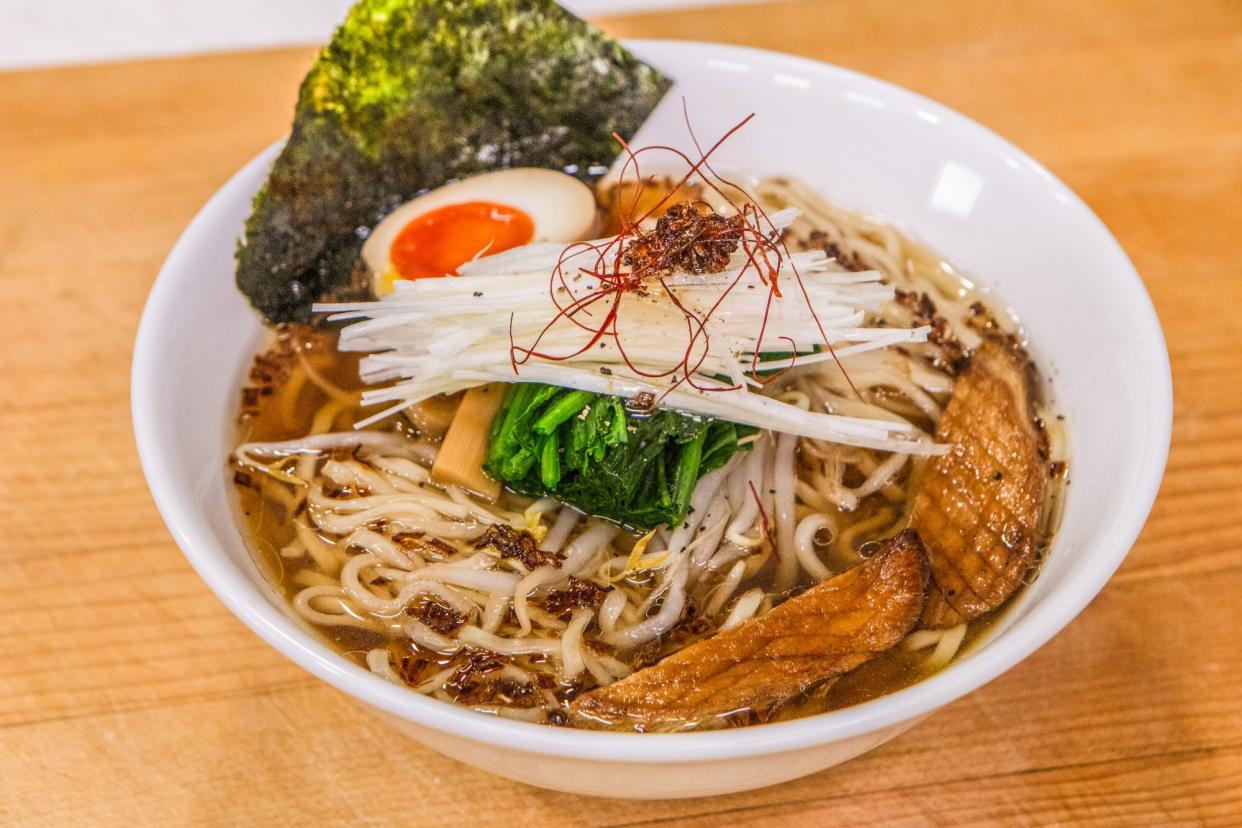Use This Flavor-Packed Stock to Make Incredible Ramen

Emily Kordovich
Our final installment of Chefs at Home closes with a dish that feels perfect for winter weather—ramen. Josh Reisner, chef and former MasterChef Junior contestant, starts his trio of episodes by making a deeply flavorful Golden Assari Chicken Chintan Stock, which gets its unctuous texture from chicken feet and boasts a rich, beautiful color.
"Most stocks that you'll make at home, you just throw everything in a pot. But this is not like that," he says. "All these ingredients here, they're getting a lot of love, they're getting properly placed, and not just thrown in. It is a long process, but at the end of six to eight hours, you will find this amazingly golden stock that lights up your kitchen."
The stock will serve as the base for two different ramen recipes, Chicken Adobo-Inspired Ramen and Mapo Tofu- and "Wok-Style"-Inspired Ramen, which he'll make in the remaining episodes. He notes that these are not traditional ramen recipes. "None of these bowls are traditional; this is just what I've learned, and what I do at home." Want to give them a try yourself? Read on for Resiner's step-by-step method and follow along with the video below.
First—Prep Your Ingredients
Before you get started on your stock, there are a few preliminary steps you need to take. Take your chicken carcasses (wings attached), wipe them clean with paper towels, and quickly blanch them, one at a time, in a pot of boiling water for 30 to 45 seconds. This will clean them and remove any scum from the meat—if that is left on the chicken, you'd end up with a bitter broth, Reisner says. When the chicken comes out of the water, it should be light gray in color.
In addition to the chicken, you also need to remove the nails and any blisters present on the chicken feet—this can be done with a pair of scissors. Boil the chicken feet just like the chicken carcasses so they're cleaned as well. They'll need 60 seconds to blanch. Then, chop your onion and Napa cabbage, char your leek on the stovetop, and peel your ginger. If you are using scallions as a garnish, Reisner demonstrates how to cut them so you can maximize their flavor.
It's Stock Time
Once your ingredients are ready to go, it's time to make the stock. Arrange the chicken carcasses on the bottom of a large—we're talking very large—pot, in a single layer in the center. Add the feet next, arranging them around the carcasses, and then place the onion quarters on top of the carcasses. Pour in cold, filtered water and bring the mixture to a simmer, reducing the heat as necessary to maintain a simmer (Reisner warns not to let the stock come to a boil, or else you'll have cloudy results). Skim off any scum from the top as it forms.
Continue simmering the stock, skimming as needed, and turn the heat down to low when the color of the stock starts to change from grayish to golden—this should take about one hour. Continue to simmer, covering the pot with the lid slightly ajar, for about another three hours until the stock turns golden yellow.
Finish and Serve
At this point, add the outer charred layer of the leek to the stock, as well as the cabbage, mushrooms, katsuobushi, Parmesan rind, ginger, and rock sugar (or substitute brown sugar). Let it simmer for another two to four hours until the stock becomes aromatic and golden. Once done, you can use the stock right away for ramen, or let it cool and store it—it can keep in the fridge for up to one week, or the freezer for up to two months.
Stay tuned for the remaining two episodes of Chefs at Home, where Reisner will use this stock to prepare Chicken Adobo-Inspired Ramen and Mapo Tofu- and "Wok-Style"-Inspired Ramen.
